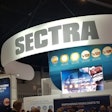
DENVER - A computer-assisted reporting tool integrated directly into the radiology workflow bolstered the ability of clinicians to distinguish benign from malignant lung nodules on CT lung screening exams in a new study, presented on Wednesday at the Society for Imaging Informatics in Medicine (SIIM) annual meeting.
The researchers from Massachusetts General Hospital developed the proprietary reporting tool based on the Brock University risk calculator, which estimates the risk of lung nodule malignancy using various patient and imaging variables. Their tool provided automated risk estimations of lung nodule malignancy to radiologists as they examined screening CT scans.
The reporting tool demonstrated an ability to discriminate cancer among lung nodules that radiologists deemed suspicious on initial observation, presenter Dr. Renata Almeida, PhD, told session attendees.
"Our tool made the Brock University risk calculator actionable at the radiologist point of care in an efficient and nondisruptive way ... showing it has the potential to optimize the prediction of nodule malignancy in patients undergoing CT lung cancer screening," she said.
Computer-assisted reporting
In recent years, various groups have sought to improve the efficiency of lung cancer screening by incorporating computer-aided detection, risk-prediction models, and artificial intelligence algorithms into the radiology reading workflow. Risk models, in particular, have proved capable of predicting the malignancy of lung nodules by taking into account a combination of variables, from patient demographics to nodule characteristics.
One such model, known as the Brock University risk calculator, can estimate the potential malignancy of lung nodules that have at least a 1% chance of progressing into cancer, i.e., American College of Radiology (ACR) lung screening reporting and data system (Lung-RADS) categories 3 or 4 nodules. Yet few, if any, risk models and calculators are currently integrated into the radiology reading workflow, Almeida noted.
"Some studies have shown that information provided by the Brock University risk calculator can add value to CT lung cancer screening," she said. "However, the only way you can use [the calculator] is by accessing it on a website or downloading an Excel sheet. As you can imagine, this would be very disruptive for the radiologist's workflow."
Almeida and colleagues thus developed a computer-assisted reporting tool and tested the viability of including it in the radiology workflow. The tool uses the Brock University risk calculator to estimate the malignancy of every lung nodule found in a set of screening CT scans and then provides this information directly to radiologists while they review the imaging data.
The researchers applied their reporting tool to the evaluation of 182 individuals who underwent CT lung screening between 2013 and 2015. The average age of the cohort was 63 years, and 82.4% were female.
In all, the reporting tool calculated malignancy risk for 818 lung nodules, 4.2% of which were confirmed to be cancerous. The proportion of nodules confirmed to be malignant was 1% for Lung-RADS category 3 nodules and 9.1% for Lung-RADS category 4 nodules.
More efficient screening
The researchers' reporting tool proved effective at differentiating malignant from benign Lung-RADS 3 and Lung-RADS 4 nodules (p = 0.017; p < 0.0001), with notably high accuracy and sensitivity for category 4 nodules.
| Capacity of a computer-assisted reporting tool to determine lung nodule malignancy | ||
| Lung-RADS 3 nodules | Lung-RADS 4 nodules | |
| Area under the receiver operating characteristic curve | 0.81 | 0.91 |
| Sensitivity | 80% | 93.3% |
| Specificity | 94.9% | 78% |
Using standard reading methods, all individuals who have a Lung-RADS 3 nodule found during CT lung screening are generally asked to return for follow-up imaging six months after the initial screening exam, despite having only a 1% to 2% risk of developing lung cancer. Using the risk calculator to estimate the malignancy risk of each nodule on screening CT scans could help decrease the need for unnecessary additional imaging for many of these individuals, Almeida noted.
Having the risk calculations made available to radiologists without referring to external sources makes regular use of this information feasible in radiology practice, she continued. Overall, the amount of time clinicians spend entering details about nodule features into the reporting tool is minimal compared with how much time the information allows clinicians to save.
The findings showed that "computer-assisted reporting tools can standardize the content of the radiology report and integrate available guideline recommendations into the radiologist's workflow," she said. "Combining the reporting tool with the [Lung-RADS] nodule management system may ultimately result in the redirection of resources for patients with a higher probability of cancer."



















